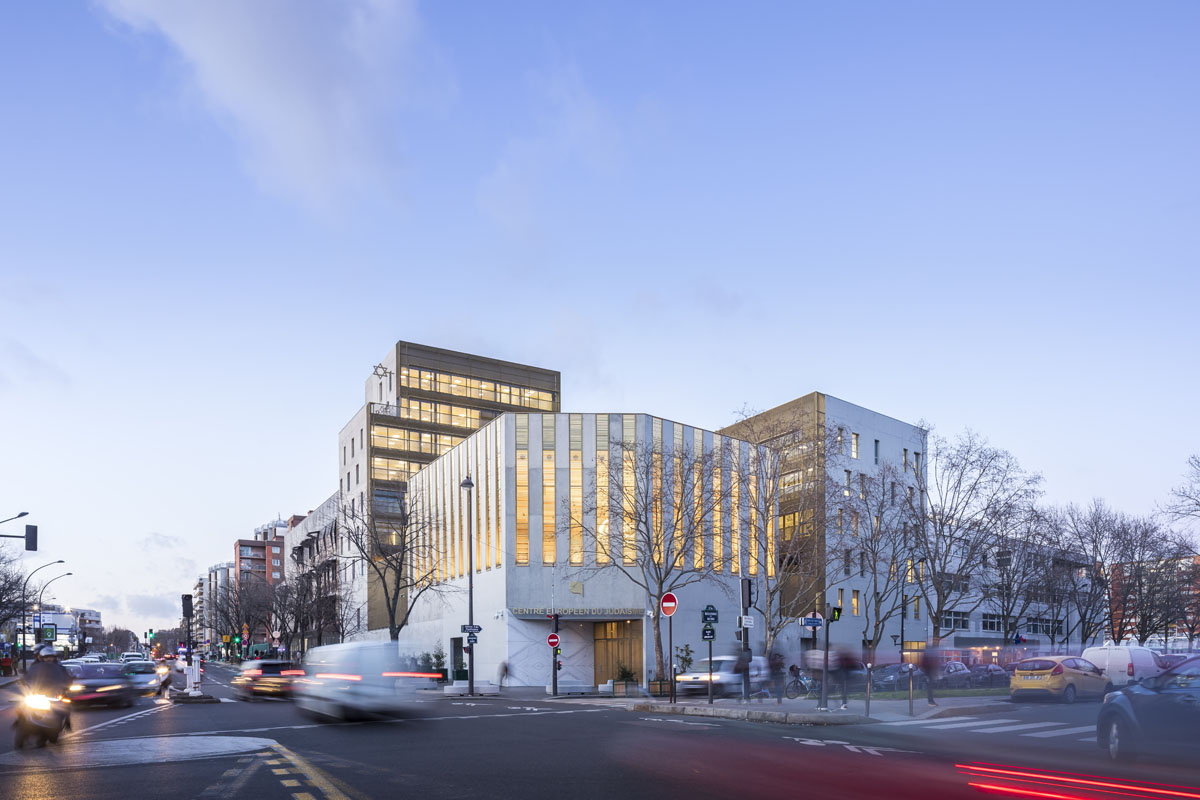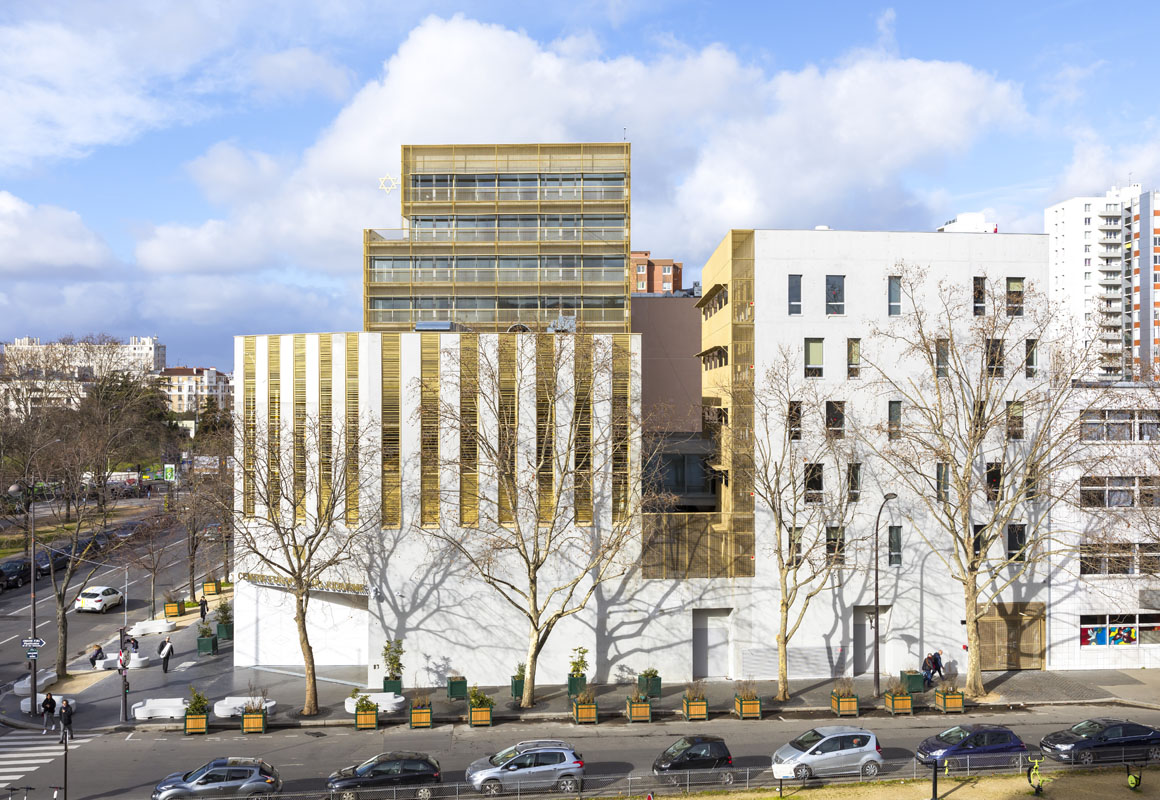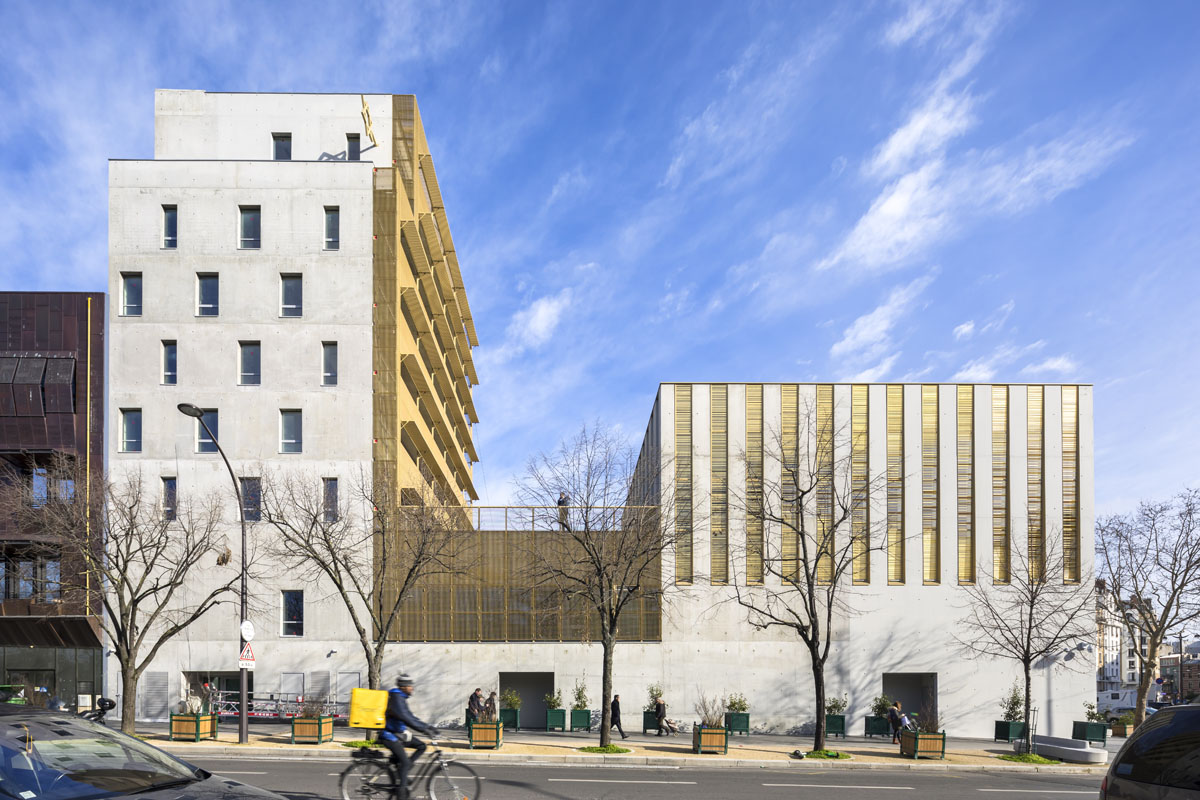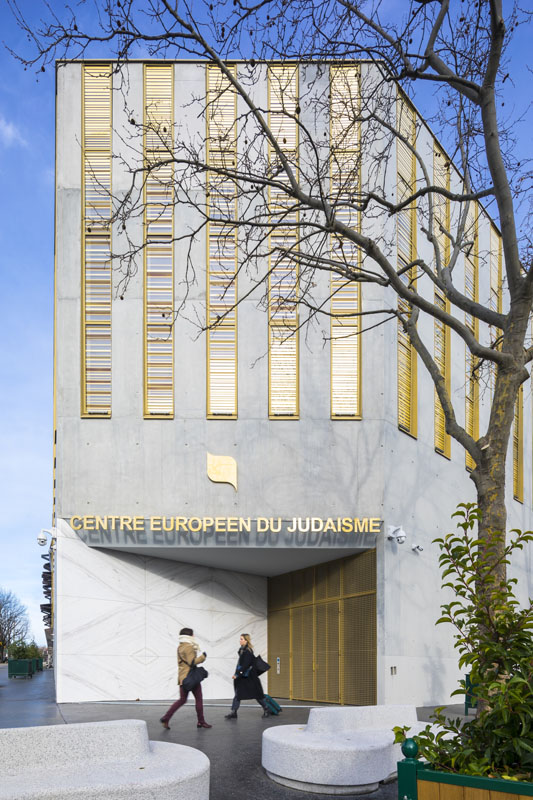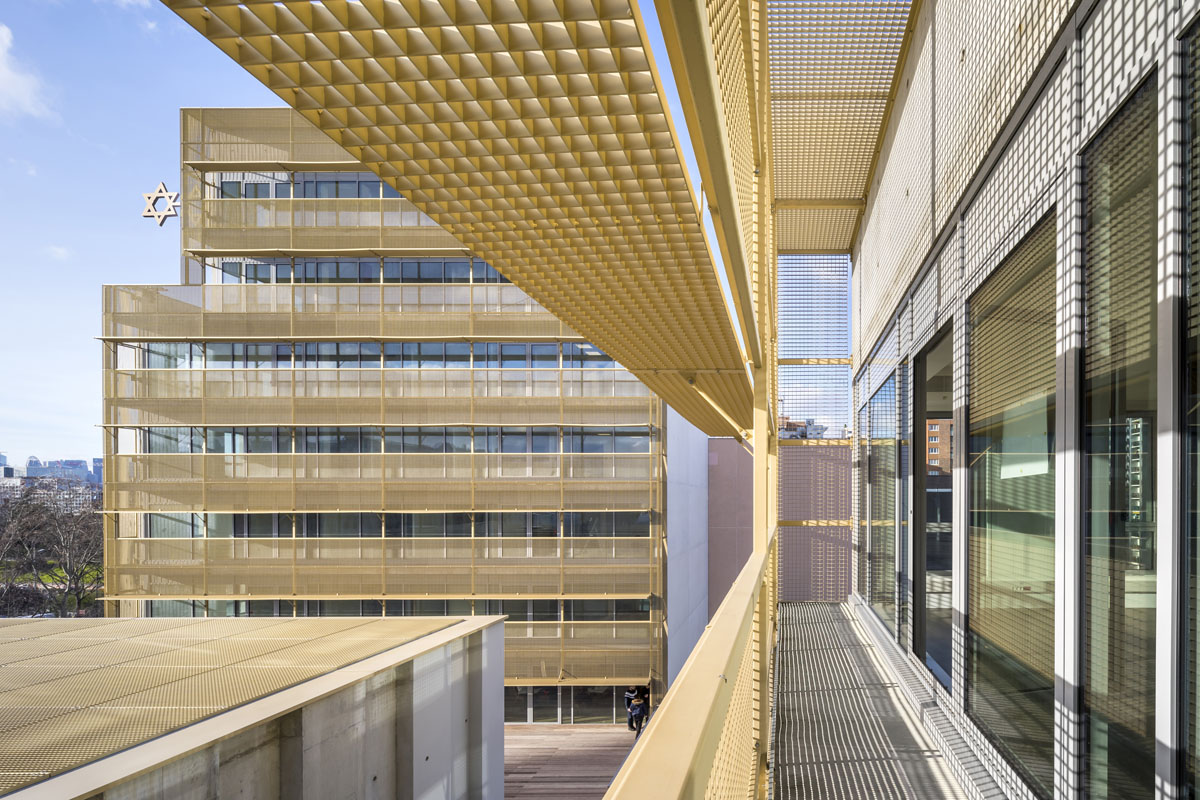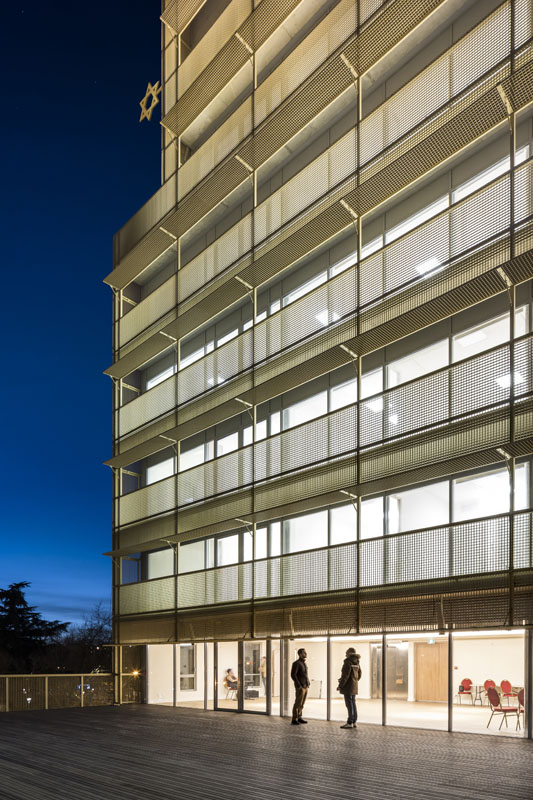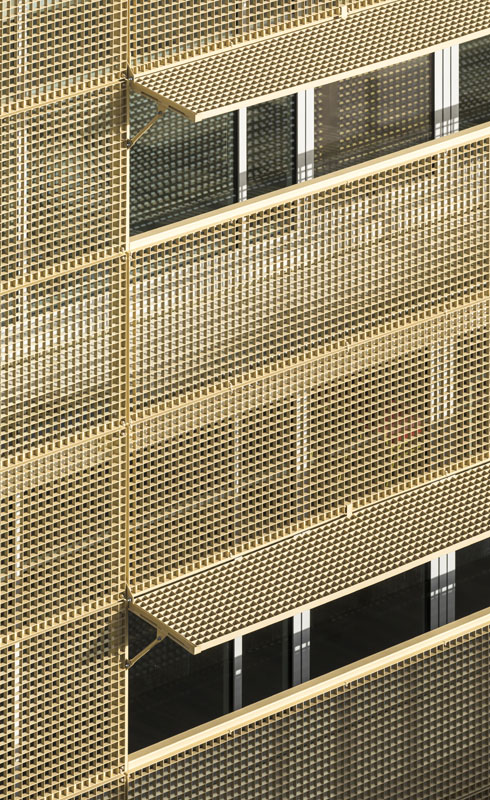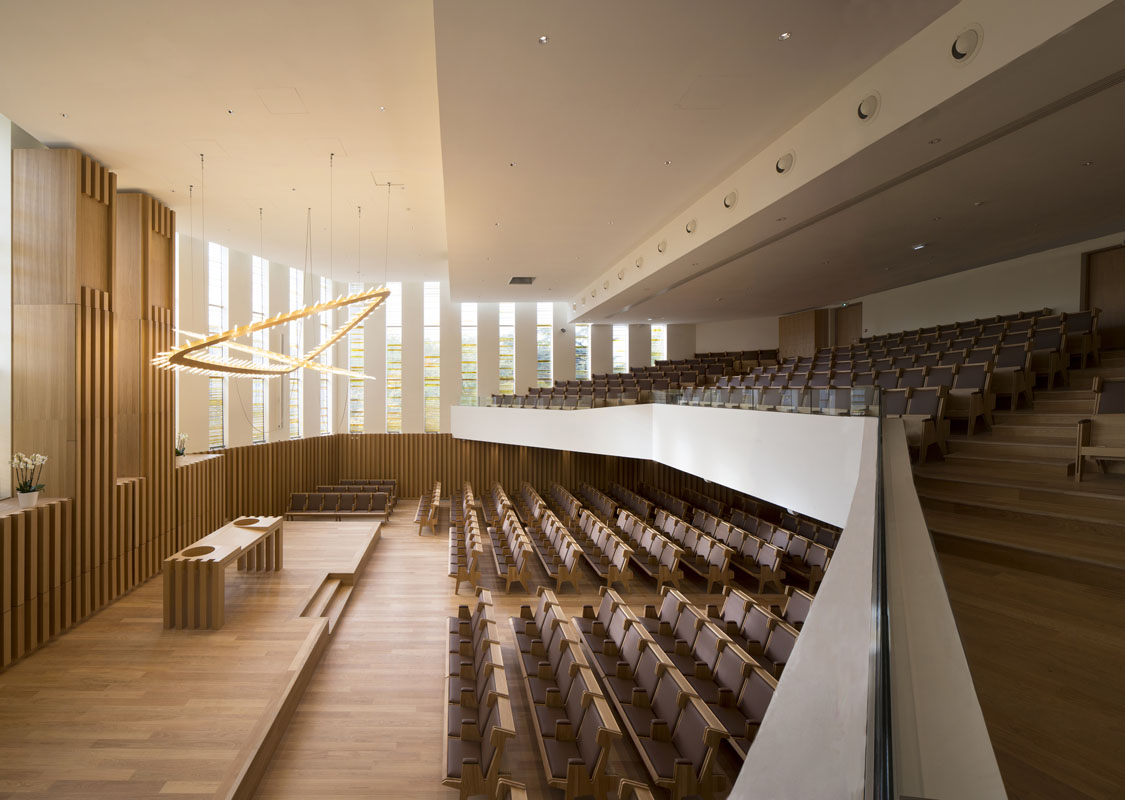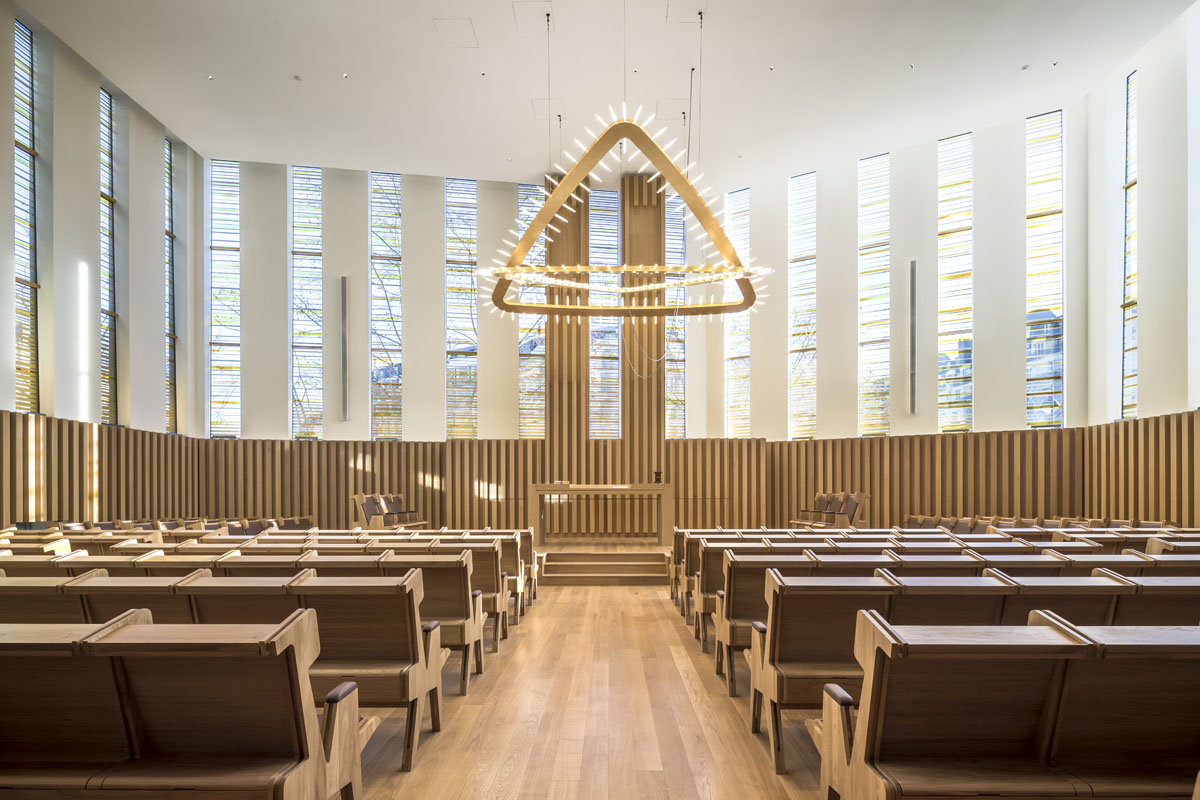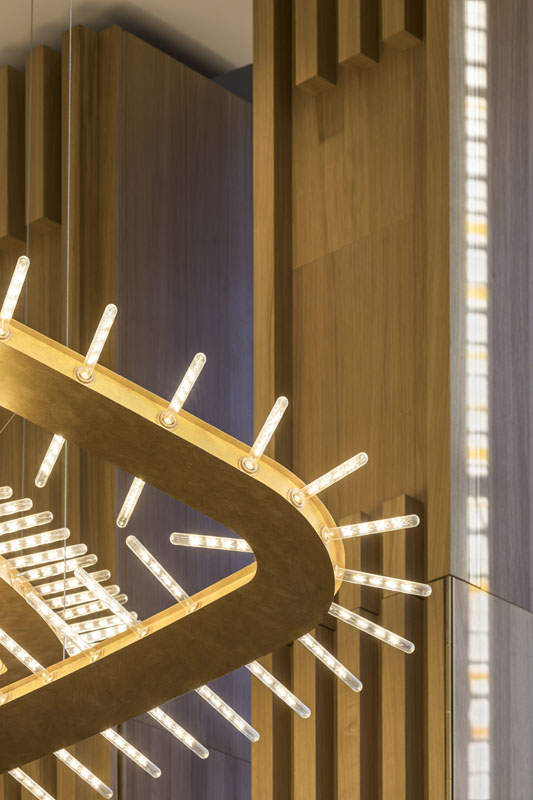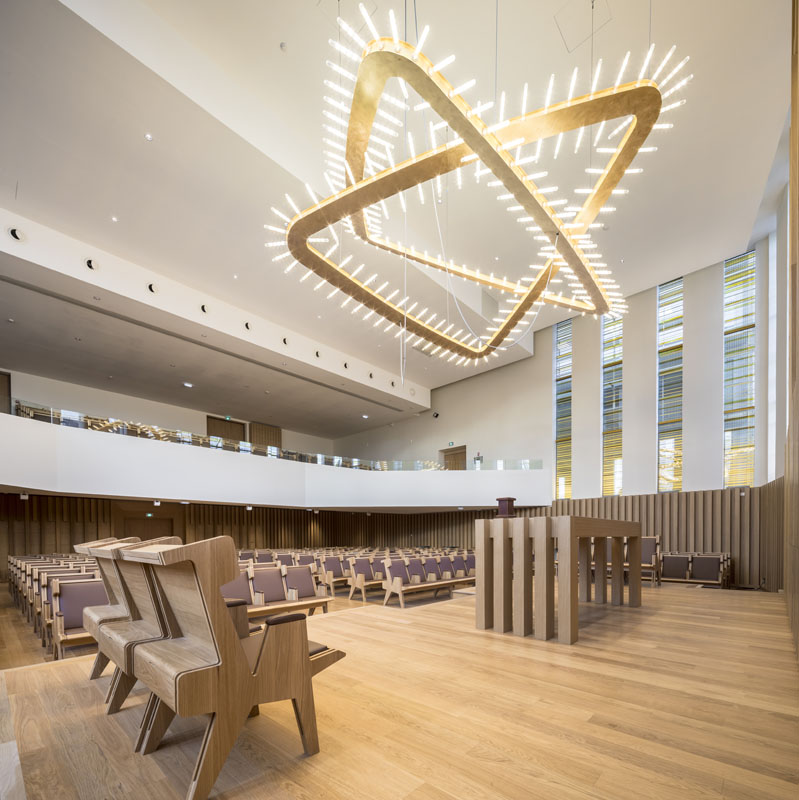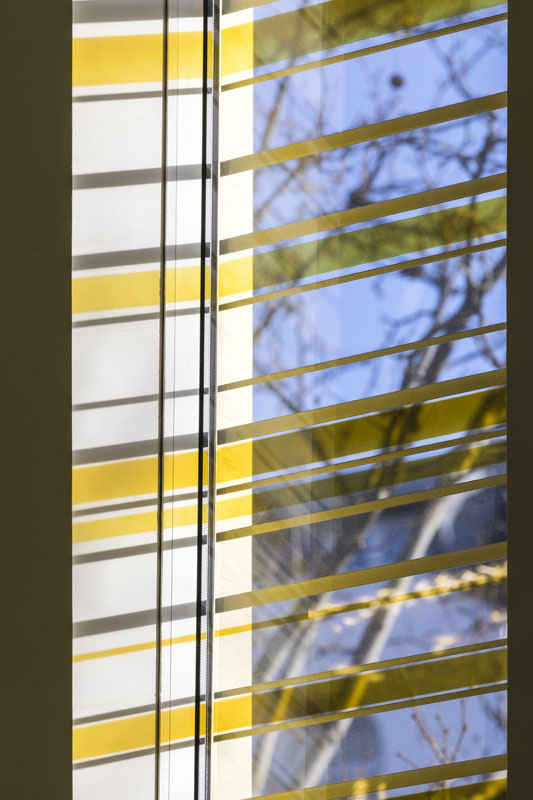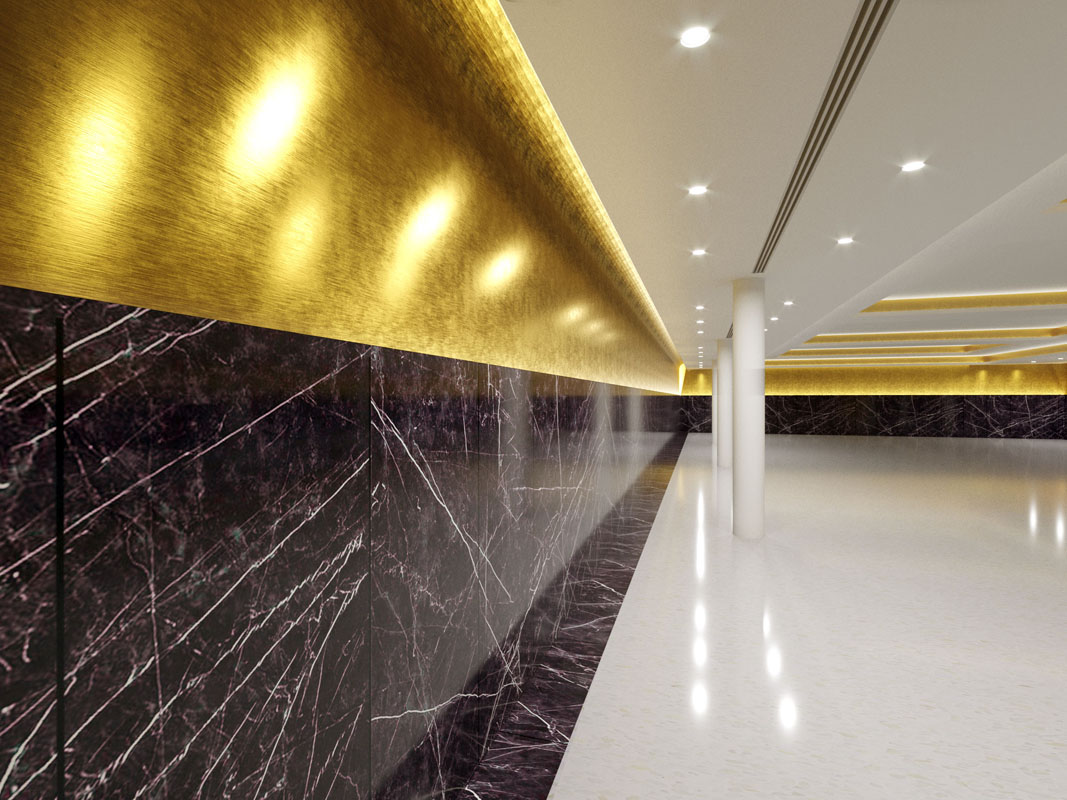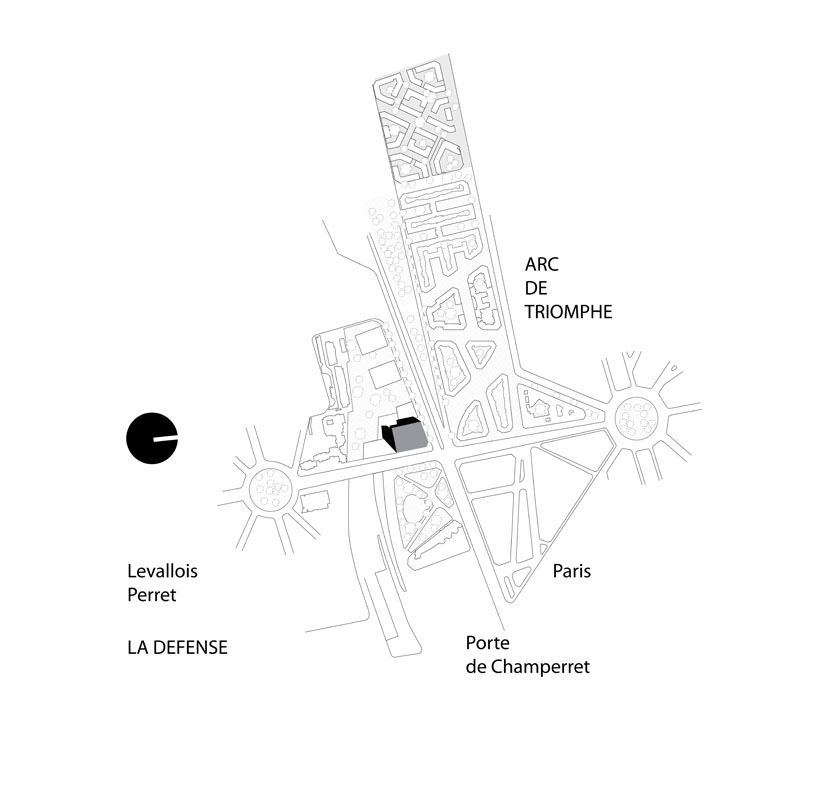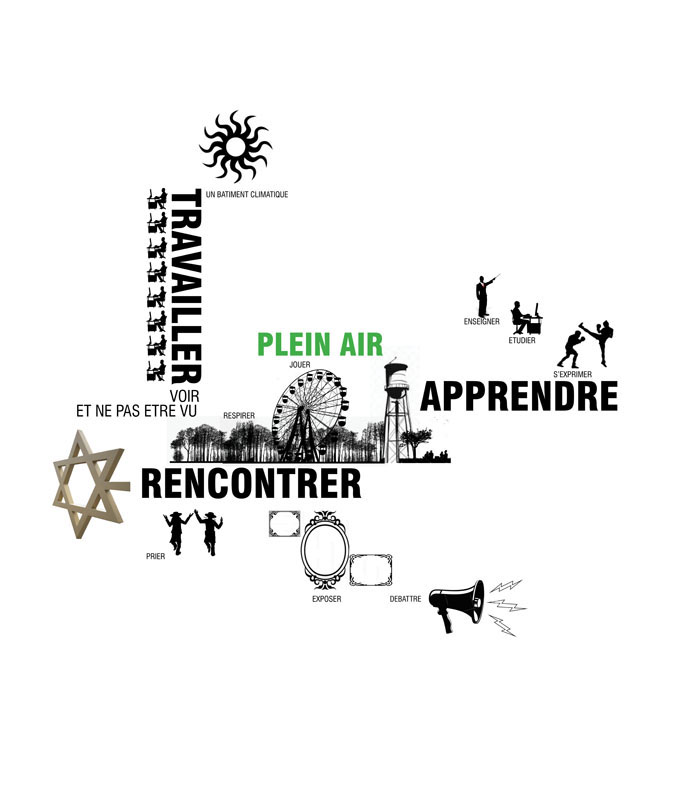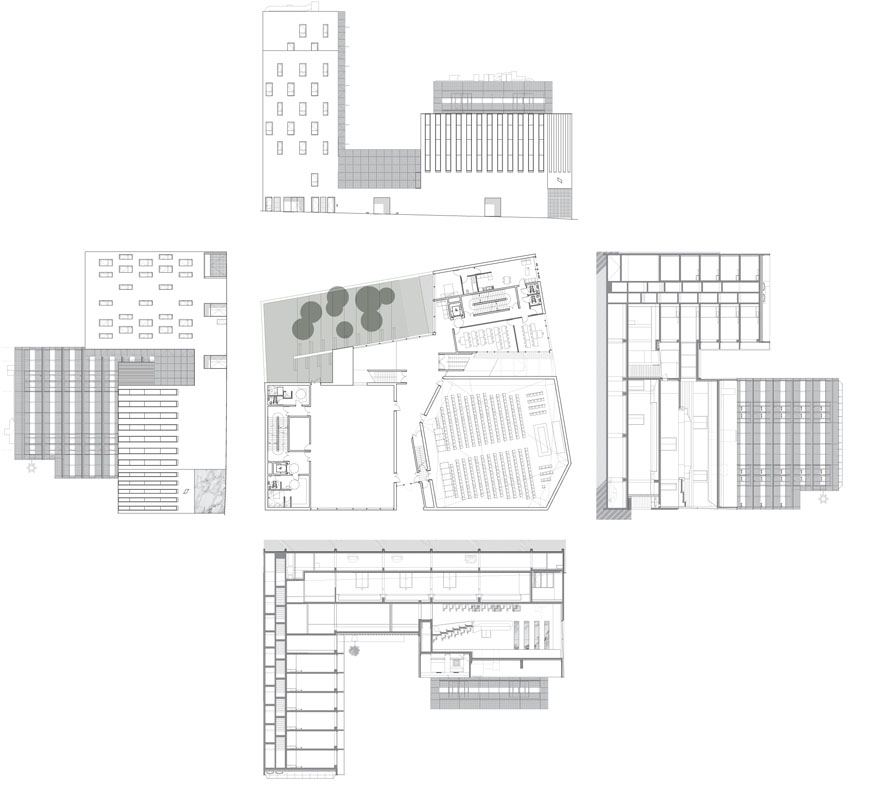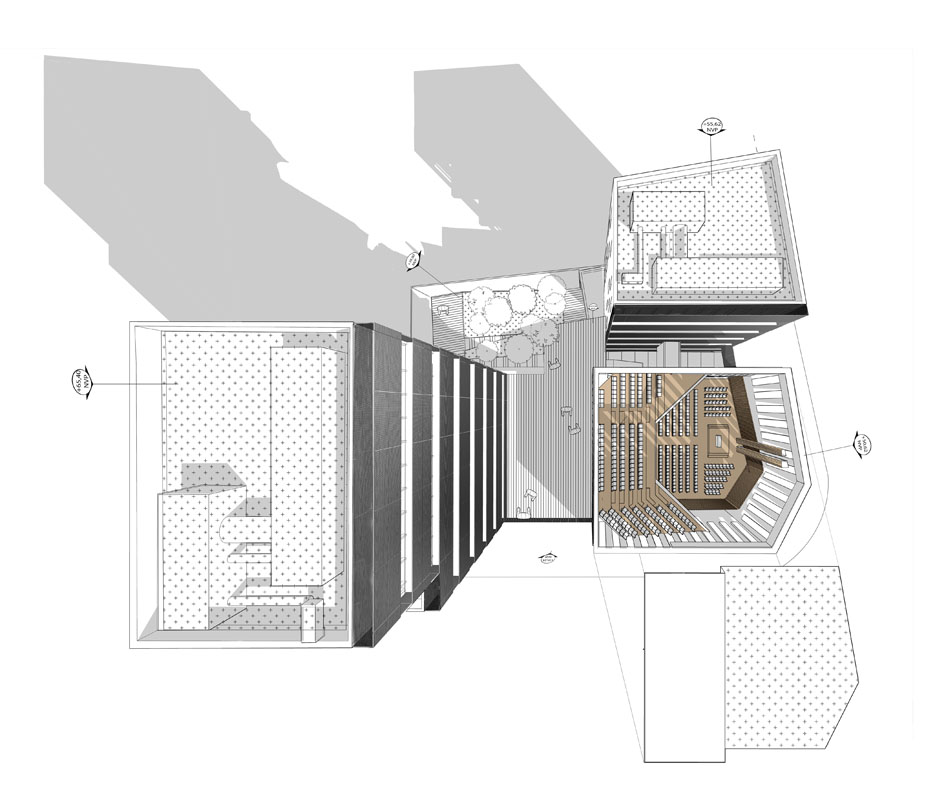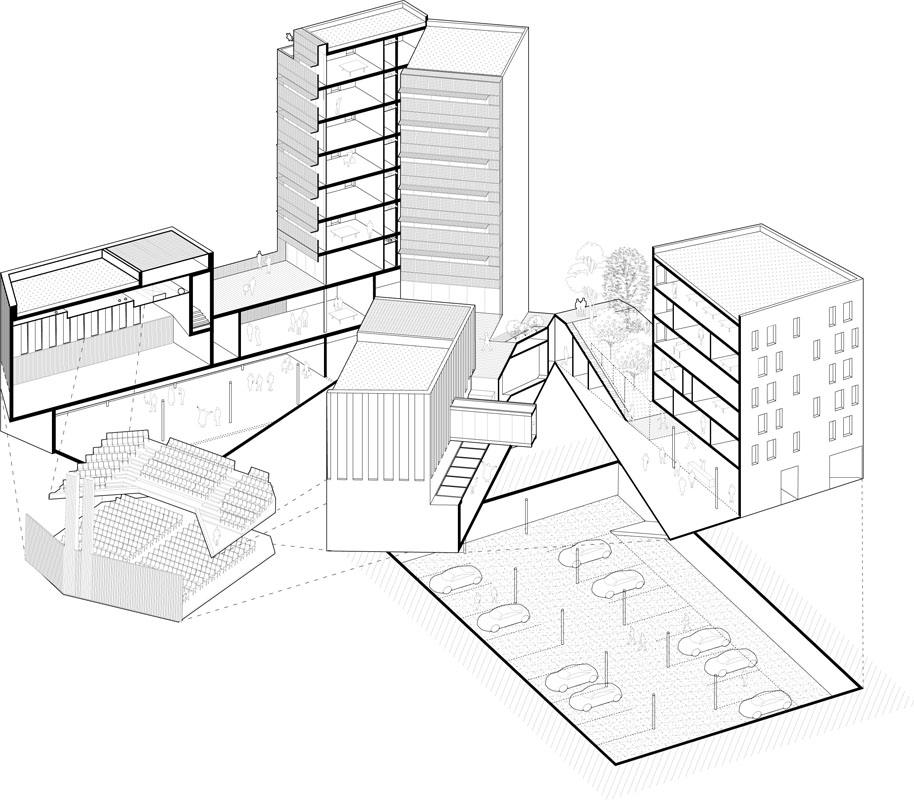Adresse : 218 rue de Courcelle / Paris XVII
Maître d’Ouvrage : SCI CJE
Surface : 5.000 m²
Coût : 12 m € HT
Année : 2019
Labellisation : RT 2010
Equipe : Stéphane Maupin + Bruno Fléchet + FVAI engineering + ALTO + AVLS + VPEAS
Statut : Construit
Mandataire : Bruno Fléchet
Crédits photographiques : Photos 1 à 12, @Boegly+Grazia
Prix/distinction : Nommé prix EQUERRE D’ARGENT 2020
DES PAYSAGES D’ISRAEL DANS UN BATIMENT SPIRITUEL
Inauguré le mardi 29 octobre 2019 par Emmanuel Macron, le nouveau Centre européen du judaïsme est situé aux portes d’une ville, dans le 17e arrondissement de Paris. Au-delà du culte, l’équipement constitue un vaste lieu d’échange et de connaissances comprenant une tour de bureaux, un centre d’art, une école, une synagogue, des salles de spectacles et d’expositions et un jardin.
Le bâtiment est moderne avec une facture faisant référence au terrain promis. Le centre du judaïsme, avec toutes ses pièces, est un paysage d’Israël. Tant dans leurs plastiques que dans leurs pouvoirs d’évocation. L’enceinte évoque les pierres massives du Mur de David, le jardin intérieur nous plonge dans la mer Morte, et les multiples trous dans la façade avec autant de galets du désert du Néguev.
Le bâtiment alterne entre massivité et convivialité, brillance et transparence, brutalité et raffinement. A l’heure du développement durable, il montre l’économie de moyens tout en favorisant un éclectisme des matériaux. En soignant le spectaculaire sans ostentation, le bâtiment offre une sobriété élégante.
The building is modern with a taste that refers to the promised land. The center of Judaism, with all of its pieces, is a landscape of Israel. Both in their plastics and in their powers of evocation. The enclosure evokes the massive stones of the Wall of David, the interior garden plunges us into the Dead Sea, and the multiple holes in the facade with so many pebbles of the Negev desert.
The building is swinging between massiveness and conviviality, brightness and transparency, brutality and refinement. At the time of sustainable development, it shows the economy of means while promoting an eclecticism of materials. By caring for the spectacular without ostentation, the building offers an elegant sobriety.
